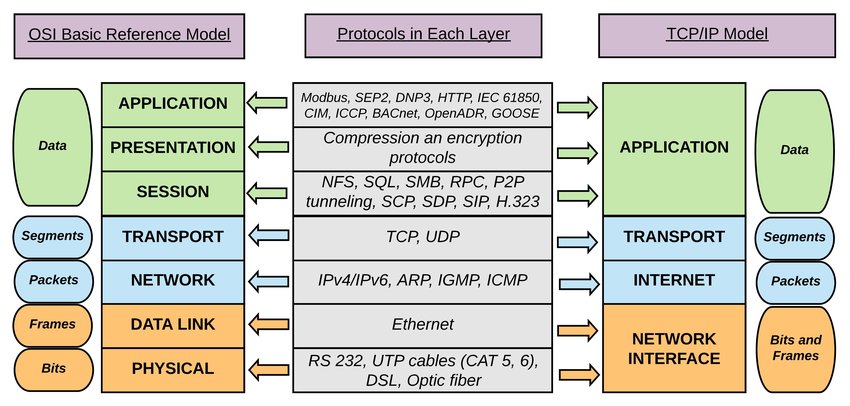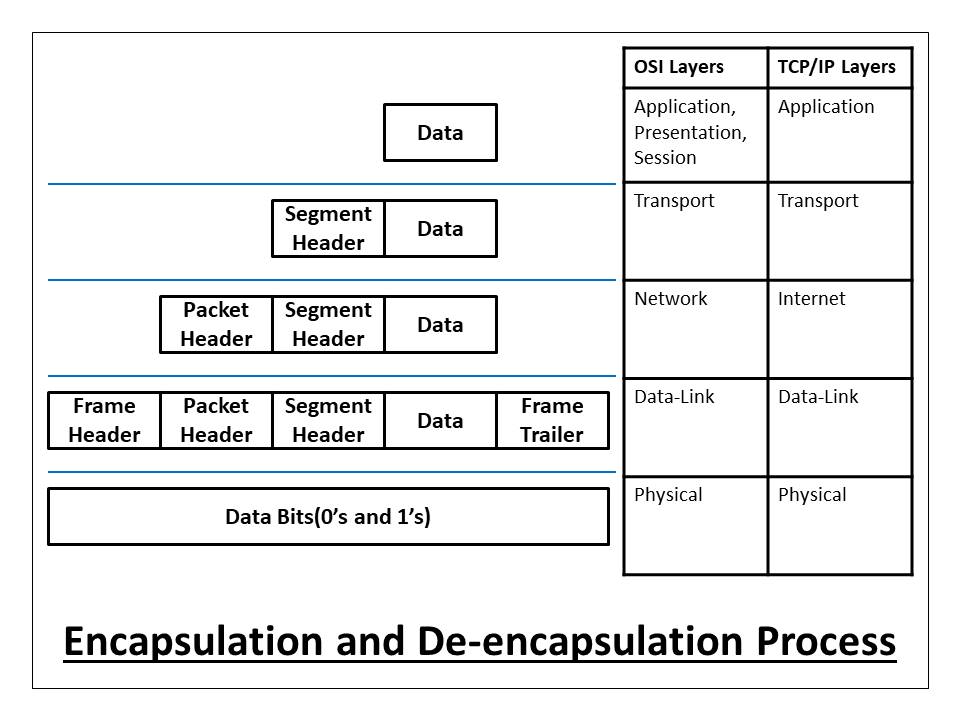# OSI - Open Systems Interconnection
OSI standardizes how networks should communicate, so different vendors and systems can interoperate.
# OSI vs TCP/IP

- Physical: Binary transmission
- wires, connectos, voltages, data rates
- Data Link: Access to media
- provides reliable transfer of data across media
- physical addressing, logical network topology, error notification, flow control
- Network: address & best path
- provides connectivity & path selection between 2 end systems
- domain of routing
- Transport: e2e connections
- concerned with transportation issues between hosts
- data transport reliability
- establish, maintain, terminate virtual circuits
- fault detection & recovery infor flow control
- Session: Dialog control - interhost communication
- establish, maintain, terminate sessions between applications
- half duplex / full duplex
- Presentation: Data representation
- ensure data is readable by receiving system
- format of data
- data structure
- negotiates data transfer syntax for app layer
- Application: network processes to apps
# Encapsulation Process

https://afteracademy.com/blog/what-is-data-encapsulation-and-de-encapsulation-in-networking/
# Why it’s not implemented literally
In real networks, protocols don’t strictly follow 7 layers.
For example:
- TCP/IP stack (used in the Internet) combines some OSI layers:
- Network Layer → IP
- Transport Layer → TCP/UDP
- Application Layer → HTTP, FTP, etc.
- Presentation and Session layers are often handled inside applications rather than as separate protocols.
- Hardware (switches, routers, NICs) rarely implements OSI layers in a strict 1-to-1 way—they just handle whatever layers they need.
# Layer 1 vs Layer 2
| Layer 1 | Layer 2 |
|---|---|
| cannot organize streams of bit | uses framming to organize or group the bits |
| cannot identify computer | uses an addressing process to identify computer |
| cannot communicate with the upper-level layers | uses LLC to communicate with the upper-level laye |
| cannot decide which computer will transmit binary data | uses MAC to decide which computer will transmit |